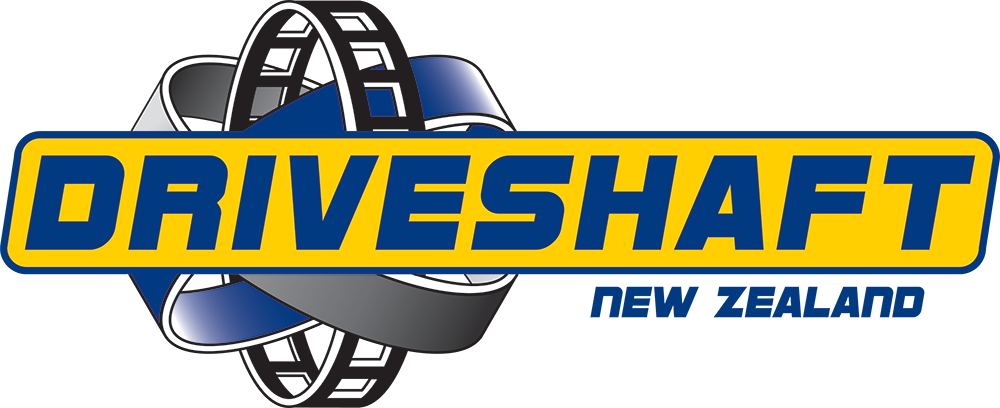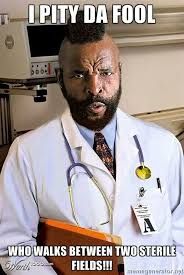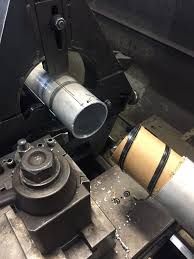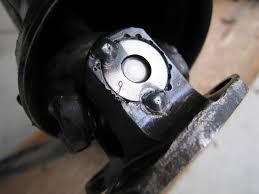- Home /
- Our News
Shop Now
-
.RHINO PERFORMANCE
- FLANGE YOKE - ADAPTOR AL 6061-T6
- FLANGE YOKE - AL BLANK 6061-T6
- FORD
- FORD SLIP YOKE 28 SPLINE
- FORD SLIP YOKE 31 SPLINE
- GM
- GM SLIP YOKE 27 SPLINE
- HOLDEN
- HOLDEN SLIP YOKE 27 SPLINE
- MAZDA
- MOPAR
- MOPAR SLIP YOKE 30 SPLINE
- NISSAN
-
SLIP YOKE - CHROMOLY
- 1310 SERIES
- 1330 SERIES
- 1350 SERIES
- 1410 SERIES
- 1480 SERIES
- 200-4R
- 3R SERIES
- 4L60
- 4L60-E
- 4L65
- 4L70
- 4L80-E
- 4R100
- 4R70W
- 700-R4
- A727
- A833
- AOD
- BORGWARNER 27 SPLINE
- BORGWARNER T10
- BORGWARNER T5
- BRIN
- C4
- C6
- FMX
- MUNCIE M20
- MUNCIE M21
- MUNCIE M21 & M22 27 SPLINE
- MUNCIE M22
- NA MANUAL TRANS
- POWERGLIDE
- ROLLER BEARING TAIL HOUSING
- SAGINAW 3 & 4 SPEED
- TH350
- TH350C
- TH375
- TH400
- TOPLOADER
- TRANSFER CASE
- TREMEC T5 28 SPLINE
- TREMEC T56 27 SPLINE
- TREMEC T56 30 SPLINE
- TREMEC TKO 31 SPLINE
- ZF
- SLIP YOKE - ROLLER BEARING
- SLIP YOKE KX - CHROMOLY
- SUBARU
- TOYOTA
-
.SONNAX PERFORMANCE
- ALUMINIUM TUBE
- FLANGE YOKE - ADAPTOR AL 6061-T6
- FLANGE YOKE - AL BLANK 6061-T6
- FLANGE YOKE - ALUMINIUM 6061-T6
- FORD
- FORD SLIP YOKE 28 SPLINE
- FORD SLIP YOKE 31 SPLINE
- GM
- GM SLIP YOKE 27 SPLINE
- HOLDEN SLIP YOKE 27 SPLINE
- MOPAR SLIP YOKE 30 SPLINE
- SLIP ASSEMBLY - ALUMINIUM 6061-T6
-
SLIP YOKE - CHROMOLY
- 1310 SERIES
- 1330 SERIES
- 1350 SERIES
- 200-4R
- 3R SERIES
- 4L60
- 4L60-E
- 4L65
- 4L70
- 4L80-E
- 4R70W
- 700-R4
- A727
- A833
- AOD
- BORGWARNER 27 SPLINE
- BORGWARNER T10
- BORGWARNER T5
- BRIN
- C4
- C6
- FMX
- G-FORCE GSR MANUAL TRANS
- MUNCIE M20
- MUNCIE M21
- MUNCIE M21 & M22 27 SPLINE
- MUNCIE M22
- POWERGLIDE
- ROLLER BEARING TAIL HOUSING
- SAGINAW 3 & 4 SPEED
- TH350
- TH350C
- TH375
- TH400
- TOPLOADER
- TRANSFER CASE
- TREMEC MAGNUM 31 SPLINE
- TREMEC T5 28 SPLINE
- TREMEC T56 27 SPLINE
- TREMEC T56 30 SPLINE
- TREMEC TKO 31 SPLINE
- ZF
- WELD YOKE - ALUMINIUM 6061-T6
- WELD YOKE - BONDABLE AL 6061-T6
- ADDITIVES
- BNW BOLT NUT & WASHER
- CARDAN JOINTS AND FITTINGS
-
CENTRE BEARINGS
- AUDI
- BMW
- BUICK
- CADILLAC
- CATERPILLAR
- CHRYSLER
- D BLOCK
- DAF
- DAIHATSU
- DODGE
- FIAT
- FORD
- FOTON
- FUSO
- GM
- GMC
- GREAT WALL
- GWB
- HAVAL
- HINO
- HOLDEN
- HONDA
- HYUNDAI
- INTERNATIONAL
- ISUZU
- IVECO
- JAGUAR
- JEEP
- KIA
- KLEIN
- LANCIA
- LAND ROVER
- LEXUS
- MACK
- MAHINDRA
- MAN
- MASERATI
- MAZDA
- MERCEDES
- MERITOR
- MITSUBISHI
- NISSAN
- OPEL
- PEUGOT
- PLYMOUTH
- PORSCHE
- RENAULT
- SCANIA
- SPICER
- SSANGYONG
- SUBARU
- SUZUKI
- TOYOTA
- VOLKSWAGEN
- VOLVO
- CENTRE PLATE
- CENTRE YOKE
- CLOSED COUPLED ASSEMBLY
- COMPANION FLANGE
- COUPLING RUBBER
- CV BOOT PROPSHAFT
- CV JOINT ABS RING
- CV JOINT BOOT KIT
- CV JOINT BOOT KIT INNER
- CV JOINT INNER
- CV JOINT INNNER
- CV JOINT OUTER
- CV JOINT PROPSHAFT
- CV JOINT PROPSHAFT STUB
- CV JOINT SPIDER
- CV SHAFT
-
driveshaft
- Akaroa
- Albert Town
- Albury
- Alexandria
- Amberley
- Aorangi
- Apia
- Arrowtown
- Ashburton
- Auckland
- Avondale
- balancing
- Balclutha
- Balfour
- Bay of Plenty
- Beachlands
- Beaumont
- Blackball
- Blenheim
- Bluff
- Brighton
- Brightwater
- Bulls
- Cambridge
- Canterbury
- Carterton
- Central Otago
- Chatham Islands
- Cheviot
- Christchurch
- Clarksville
- Clutha
- Coastal Otago
- Cook Islands
- Coromandel
- Cromwell
- D Urville Island
- Dannevirke
- Darfield
- Dargaville
- driveshaft
- Drury
- Dunedin
- Duntroon
- East Cape
- Edgecumbe
- Eketahuna
- Eltham
- Fairlie
- Featherston
- Feilding
- Fiji
- Flaxmere
- Foxton
- Foxton Beach
- Frankton
- Franz Josef
- Geraldine
- Gisborne
- Glenorchy
- Gore
- Granity
- Great Barrier
- Greymouth
- Greytown
- Haast
- Hakataramea
- Hamilton
- Hanmer Springs
- Hastings
- Havelock
- Havelock North
- Hawea
- Hawera
- Hawkes Bay
- Helensville
- Henley
- Hinuera
- Hokitika
- Horowhenua
- Howick
- Huntly
- Inangahua Junction
- Inglewood
- Invercargill
- Kaiapoi
- Kaikohe
- Kaikoura
- Kaitaia
- Kaitangata
- Karamea
- Katikati
- Kawakawa
- Kawau Island
- Kawerau
- Kawhia
- Kerikeri
- Kihikihi
- Kinloch
- Kumara
- Kumeu
- Kurow
- Lawrence
- Leeston
- Leigh
- Levin
- Lincoln
- Little River
- Lower Hutt
- Lumsden
- Lyttelton
- Manaia
- Manawatu
- Mangakino
- Manukau
- Manurewa
- Maraetai
- Marlborough
- Martinborough
- Marton
- Masterton
- Matakana
- Matakana Island
- Matamata
- Matiere
- Maungaturota
- Mayfield
- Methven
- Middlemarch
- Millers Flat
- Milton
- Moeraki
- Moerewa
- Mokau
- Morrinsville
- Mosgiel
- Mossburn
- Motueka
- Mount Maunganui
- Mount Somers
- Murchison
- Murupara
- Nadi
- Napier
- Naseby
- Nelson
- Nelson Bays
- New Brighton
- New Caledonia
- New Plymouth
- Ngapara
- Ngaruawahia
- Ngongotaha
- North Island
- North Otago
- North Shore
- North Shore City
- Northland
- Nui
- Nuku alofa
- Oamaru
- Oban
- Ohakune
- Ohoka
- Ohope Beach
- Ohura
- Okato
- Omokoroa
- Opotiki
- Opunake
- Orewa
- Otago
- Otaki
- Otakou
- Otorohanga
- Oxford
- Paekakariki
- Paeroa
- Pahiatua
- Palmerston
- Palmerston North
- Papakura
- Papatoetoe
- Paraparaumu
- Patea
- Pauanui
- Pauatahanui
- Petone
- Picton
- Piopio
- Pirongia
- Pleasant Point
- Plimmerton
- Porirua
- Port Chalmers
- Portobello
- Pukekohe
- Pukerua Bay
- Pukeuri
- Putaruru
- Queenstown
- Raetihi
- Raglan
- Ramarama
- Ranfurly
- Rangiora
- Rarotonga
- Raumati
- Reefton
- Renwick
- Richmond
- Riverhead
- Riverton
- Rodney
- Rolleston
- Ross
- Rotorua
- Roxburgh
- Ruatoria
- Runanga
- Russell
- Samoa
- Sanson
- Seddon
- Shannon
- Sheffield
- Silverdale
- Snells Beach
- South Island
- Southland
- Springfield
- Stewart Island
- Stratford
- Suva
- Taihape
- Taipa-Mangonui
- Tairua
- Takaka
- Takapuna
- Tapanui
- Taradale
- Taranaki
- Tasman
- Taumarunui
- Taupo
- Tauranga
- Te Anau
- Te Arai
- Te Aroha
- Te Awamutu
- Te Kuiti
- Te Puke
- Temuka
- Thames
- Thames Valley
- Timaru
- Tinwald
- Tirau
- Tokarahi
- Tokoroa
- Tolaga Bay
- Tonga
- Tongariro
- tractor
- Tuakau
- Turangi
- Tuvalu
- Twizel
- Upper Hutt
- Vanuatu
- Viti Levu
- Waharoa
- Waiheke Island
- Waihi
- Waihi Beach
- Waikanae
- Waikato
- Waikouaiti
- Waimate
- Wainuiomata
- Waiouru
- Waipawa
- Waipukurau
- Wairakei
- Wairarapa
- Wairoa
- Waitahuna
- Waitakere
- Waitara
- Waitoa
- Waitotara
- Waiuku
- Wakefield
- Wallacetown
- Walton
- Wanaka
- Wanganui
- Ward
- Wardville
- Warkworth
- Waverley
- Wellington
- Wellsford
- West Coast
- Westport
- Whakamaru
- Whakatane
- Whangamata
- Whangamomona
- Whanganui
- Whangarei
- Whiritoa
- Whitby
- Whitford
- Whitianga
- Willowby
- Winscombe
- Winton
- Woodend
- Woodville
- Wyndham
- DRIVESHAFT ASSEMBLY
- DRIVESHAFT INTERAXLE
- DRIVESHAFT SLINGER
-
DRIVESHAFT TUBE
- ALUMINIUM TUBE
- CHROMOLY TUBE
- IMPERIAL TUBE 1.001 - 2.000 INCH
- IMPERIAL TUBE 2.001 - 3.000 INCH
- IMPERIAL TUBE 3.001 - 4.000 INCH
- IMPERIAL TUBE 4.001 - 5.000 INCH
- IMPERIAL TUBE 5.001 - 6.000 INCH
- IMPERIAL TUBE 6.001 - 7.000 INCH
- METRIC TUBE 11 - 40 MM
- METRIC TUBE 41 - 70 MM
- METRIC TUBE 71 - 100 MM
- METRIC TUBE 101 - 130 MM
- METRIC TUBE 131 - 160 MM
- METRIC TUBE 161 - 190 MM
- DRIVESHAFT TUBE INCREASING BUSH
- DUST COVER SEAL
- END YOKE
- END YOKE SPLINED BORE
- FIXED JOINT ASSEMBLY
-
FLANGE YOKE
- .SICIT - MADE IN ITALY
- A-CROSSOVER FLANGE
- BLANK FLANGE
- BLMC
- BMW
- CHINESE TRUCK & BUS
- CHRYSLER
- DAF
- DIN
- DODGE
- ELBE
- FORD
- FOTON
- GM
- GMB
- GREAT WALL
- GWB
- HINO
- HOLDEN
- HYUNDAI
- ISUZU
- IVECO
- JAP PTO
- JAPANESE PTO
- JEEP
- KENWORTH
- KIA
- KLEIN
- KV
- KV 150
- KV150
- KV165
- KV180
- LAND ROVER
- MACK
- MAZDA
- MECHANICS
- MERCEDES
- MITSUBISHI
- NISSAN
- PTO
- ROOTES GROUP
- SCANIA
- SPICER
- STEERING COMPONENT
- SUBARU
- SUZUKI
- TOYOTA
- TRIPOD COUPLING
- UNIMOG
- VOLVO
- VW
- FLANGE YOKE ADAPTOR
- FLANGE YOKE SPIGOT ADAPTOR
- FROST PLUGS
- MACHINED BAR
- MIDSHIP ASSEMBLY
- MIDSHIP ASSEMBLY SLIDING
- MIDSHIP YOKE
- OEM CROSSOVER
- SHORT COUPLED ASSEMBLY
- SLIP ASSEMBLY
- SLIP JOINT ASSEMBLY
- SLIP YOKE
- SLIP YOKE TRANSMISSION
- SMALL PARTS
- SPLINED BAR & SLEEVES
- SPLINED BAR AND NIB
- STAKED PUNCH DIE
- STEERING COLUMN SHAFT
- STEERING COMPONENT
- STEERING COUPLING ASSEMBLY
- STUB SHAFT
- STUB SHAFT MIDSHIP
- TRIPOD COUPLING
- U-BOLT STRAP KIT LOCK TAB
- Uncategorised
-
UNIVERSAL JOINT
- .AGRICULTURAL UNIVERSAL JOINTS
- .ALUMINIUM APP UNIVERSAL JOINTS
- .CROSSOVER UNIVERSAL JOINTS
- .OFFSET UNIVERSAL JOINTS
- .SICIT - MADE IN ITALY
- .SPICER - MADE IN USA
- .STAKED UNIVERSAL JOINTS
- .TOYO - MADE IN JAPAN
- .WHEEL UNIVERSAL JOINTS
- AAA OVERSTOCKED U-JOINT
- AAM
- AGRICULTURE
- ALFA ROMEO
- ARCTIC CAT
- ATV
- AXLE JOINT
- BENBOW
- BMW
- BYPY
- CARRARO
- CASE IH
- CATERPILLAR
- CHINESE U-JOINTS
- CHRYSLER
- CLEVELAND
- COMER
- COMPACT
- CROSSOVER FORD DIFF U-JOINTS
-
CROSSOVER U-JOINTS
- 055
- 10.5C
- 1000
- 10C
- 1140
- 1210
- 1300
- 1310
- 1310 SPEC
- 1310WJ
- 1330
- 1350
- 1410
- 1480
- 1550
- 1650
- 1710
- 17R
- 1810
- 1850
- 1880
- 2 1/2 RL
- 21R
- 25R
- 2C
- 2R
- 3C
- 3R
- 4C
- 4R
- 5380
- 587.42
- 587.48.
- 5C
- 5R
- 687.40
- 687.55
- 687.65
- 688.40
- 688.55
- 688.55 SCANIA
- 688.65
- 6C
- 6R
- 7260
- 7290
- 7C
- 7R
- 8.5C
- 8C
- 8R
- 9C
- DAIHATSU
- ELBE
- FURUKAWA
- HOLDEN
- ISUZU
- KOMATSU
- L6N
- MERCEDES
- NISSAN
- P55
- R55
- S55
- S55-55-675
- SCANIA
- SUZUKI
- TOYOTA
- DAF
- DAIHATSU
- DETROIT
- DEUTZ
- DODGE
- DUMP TRUCK
- ELBE
- FIAT
- FORD
- FORKLIFT
- FOTON
- FREIGHTLINER
- FURUKAWA
- FUSO
- GM
- GMC
- GREAT WALL
-
GWB
- 173.10
- 173.20
- 190.50
- 190.55
- 190.60
- 190.65
- 190.70
- 190.75
- 190.80
- 286.57
- 287.00
- 287.10
- 287.20
- 287.30
- 287.40
- 292.50
- 292.55
- 292.60
- 292.65
- 292.70
- 292.75
- 373.20
- 387.20
- 390.60
- 390.65
- 390.70
- 390.75
- 390.80
- 392.50
- 392.55
- 392.60
- 392.65
- 392.70
- 392.80
- 392.85
- 393.75
- 393.80
- 393.85
- 469.30
- 473.10
- 473.20
- 473.30
- 587.10
- 587.15
- 587.20
- 587.30
- 587.35
- 587.36
- 587.42
- 587.42 687.55 688.55
- 587.48
- 587.50
- 587.55
- 687.15
- 687.20
- 687.25
- 687.30
- 687.35
- 687.40
- 687.40 688.40
- 687.45
- 687.50
- 687.55
- 687.60
- 687.65
- 688.20
- 688.25
- 688.30
- 688.35
- 688.40
- 688.45
- 688.55
- 688.65
- HANOMAG
- HAVAL
- HINO
- HITACHI
- HOLDEN
- HONDA
- HYSTER
- HYUNDAI
- INTERNATIONAL HARVESTER
- ISUZU
- IVECO
- JAGUAR
- JAPANESE
- JAPANESE PTO
- JCB
- JEEP
- JOHN DEERE
- KATO CRANE
- KAWASAKI
- KENWORTH
- KIA
- KLEIN
- KOMATSU
- KUBOTA
- LAND ROVER
- LEXUS
- LINCOLN
- MACK
- MAHINDRA
- MAN
- MARINE
- MAZDA
- MECHANICS
- MERCEDES
- MERCRUISER
- MERITOR
- MIPER
- MITSUBISHI
- MOTO GUZZI
- MOXY
- NEW HOLLAND
- NISSAN
- OFFROAD
- OFFSET UNIVERSAL JOINT
- OPEL
- PLYMOUTH
- POLARIS
- PTO
- RENAULT
- ROCKWELL
- SAAB
- SCANIA
- SPICER
- SSANGYONG
- STAKED REPLACEMENT U-JOINT
- STAKED STEERING
- STAKED UNIVERSAL JOINT
- STEERING
- SUBARU
- SUZUKI
- TCM
- TEREX
- TOYOTA
- TRIUMPH
- TWIN DISC TRANSMISSION
- UNIMOG
- VAG
- VAUXHALL
- VOITH
- VOLKSWAGEN
- VOLVO
- WALTERSCHEID
- WEASLER
- WHEEL U-JOINTS
- YAMAHA
- ZAA-MIX. SUP. DEL.KEE. OR SOR.
- WELD YOKE
-
WHEEL BEARING
- ALFA ROMEO
- AUDI
- BEDFORD
- BENTLEY
- BLMC
- BMW
- BUICK
- CADILLAC
- CHERY
- CHEVROLET
- CHRYSLER
- CITROEN
- DAEWOO
- DAIHATSU
- DODGE
- FIAT
- FORD
- FOTON
- GEELY
- GM
- GREAT WALL
- HINO
- HOLDEN
- HONDA
- HUMMER
- HYUNDAI
- ISUZU
- IVECO
- JAGUAR
- JEEP
- KIA
- LADA
- LANCIA
- LAND ROVER
- LDV
- LEXUS
- MAZDA
- MERCEDES
- MG
- MINI
- MITSUBISHI
- NISSAN
- OPEL
- PEUGEOT
- PONTIAC
- PORSCHE
- PROTON
- RENAULT
- ROLLS ROYCE
- ROOTES GROUP
- ROVER
- SAAB
- SEAT
- SKODA
- SMART
- SSANGYONG
- SUBARU
- SUZUKI
- TATA
- TESLA
- TOYOTA
- TRAILER
- TRIUMPH
- VAUXHALL
- VOLKSWAGEN
- VOLVO
- WHEEL BEARING / CV NUTS
- WHEEL BEARINGS
- YOKE SHAFT
Our News
24/04/23
20/05/21
Manufacturing or modifying your driveshaft
Factors for consideration
Maximum rpm for the shaft
If the shaft exceeds the maximum critical speed for the tube diameter, wall thickness and length, the shaft will ellipse. This bends the shaft and leads to critical failure. RPM determines whether you need to build a two-piece or one-piece shaft. Or if your budget can stretch to aluminum or even carbon fiber.
Power and Torque
This mostly determines wall thickness of the tube as well as the quality of componentry we need to use. Driveshaft NZ is the NZ Agent for Sonnax performance driveline components. We also carry a quality aftermarket range as well as OEM componentry. Current practice for some OEM manufacturers is to use the crimped in (staked) style universal joints, while we can modify and reuse this componentry it is by no means close to the performance characteristics of OEM Spicer solid cross nylon button universals. We like to use 1310 and 1350 series componentry.
Operating angles
The angles of the transmission and the differential need to be as parallel as possible. In general purposes they should not exceed 2° and ideally less than 1/2° for racing. Greater angles create vibration and power loss at higher RPMs while reducing the shafts maximin safe operating speed.
Balancing
It is standard practice to balance a driveshaft when any work is carried out. Driveshaft NZ will not warranty any shaft that has not been balanced. We use the highest quality CEMB balancing machines capable of balancing up to 5000 rpm. Most driveshaft shops only balance to 2000 rpm.
13/02/2020
BALANCING YOUR DRIVESHAFT
Fitting your own Universal Joints
In order for your driveshaft to be dynamically balanced, the universal joints need to be fitted correctly without end float or radial play. Just fitting new universal joints using the standard clips supplied may contribute to an out of balance shaft.
Fitting your own Centre Bearings
Centre Hanger Bearings can cause a vibration when fitted to vehicles even after the shaft has been dynamically balanced. When the engine torque is applied during take-off, soft rubber allows the driveshaft to excessively move causing a vibration this would normally occur under acceleration. Hard rubber does not allow sufficient absorption of the torque and therefore transfers the vibration through the vehicle. Driveshaft NZ recommends using quality centre bearings over lower priced, lower quality units.
While all effort to balance your driveshaft after you have fitted components yourself, or products from another supplier, will be made. No responsibility will be assumed or undertaken by Driveshaft NZ.
13/02/2020
Choose your heart surgeon well
When you require a heart transplant you would typically not choose your surgeon on price, you pick the surgeon with the most experience because what he does can determine whether you wake up. The same applies to your vehicle.
Critical speed is the speed at which your driveshaft tube starts whipping and begins to fail causing massive damage to the vehicle and total destruction of the shaft itself. The length, weight and diameter all determine the max allowable safe operating speed of a driveshaft. (This is calculated at 0.85% of critical speed for a standard passenger car) While other companies will manufacture shafts outside of the SAE AE7 standards without warning or discussing the possible outcomes with the customer, Driveshaft NZ will not. Your safety and the safety of your family and other road users is paramount.
When Driveshaft NZ build your driveshaft, we build it to better than SAE AE7 specifications. For instance, max allowable runout for tube on a typical passenger vehicle is 0.020 in (.52mm) we only allow 0.003in (.06mm) when we build your new shaft.
A poorly engineered and built shaft is dangerous to you, your family and others on the road.
13/02/2020
Cardboard inside my Driveshaft?
Driveshafts sometimes have a cardboard tube rolled up and placed inside of the driveshaft tube. The reasoning behind this is to reduce the resonance and vibration that a shaft can make while rotating at a particular speed.
The cardboard is not usually glued into position, it is usually held in place by tension. As the age of the shaft increases, the cardboard can become loose and moves positions within the shaft effectively changing the balance of the shaft.
When Driveshaft NZ balance your driveshaft, we endeavour to ascertain if your shaft contains cardboard. We however cannot guarantee a balance if cardboard within the shaft moves. The only 100% effective way to identify shafts with cardboard is to cut them open.
Because it is not economical to cut the shaft and remove the cardboard for every balanced driveshaft, we recommend a wait and see approach. If your driveshaft is initially fine when it is fitted back onto the vehicle and a short period later, it develops a vibration, and you can be assured it is likely this issue.
Driveshaft NZ will balance the shaft a second time for you at no additional charge; however the cost to remove the cardboard will be on the customer.
19/02/2020
Staked in style universal joints
Driveshaft NZ use only OEM style staked replacement joints unlike some of the other so-called specialists. We have even seen some driveshaft shops use welded washers to hold in the joints. This is dodgy at best and seen as illegal if you read the NZTA rules regarding vehicle modification.
By welding washers to the yokes of your shaft, you harden the area where the staking is required to centralise and hold the joint into the yokes. You have effectively destroyed your driveshaft.
Other options are universal joints designed to fit the application where OEM staked joints are replaced with internal cir-clipped joints. These should only be used if the yoke journal is fully round without a taper so the cir-clip is fully seated along its entire length.




